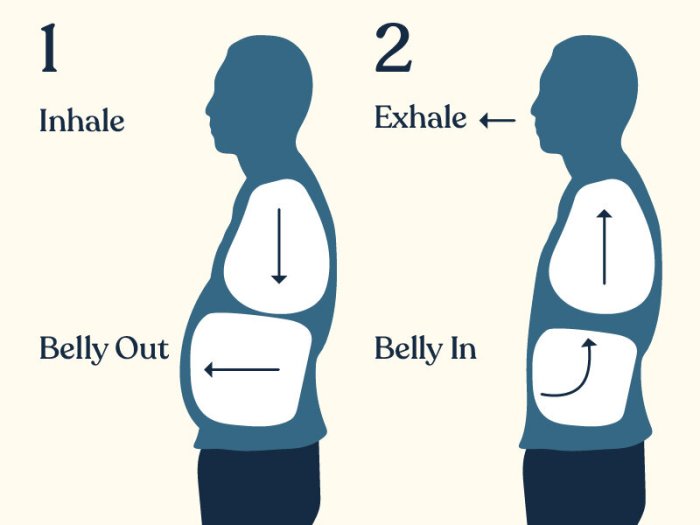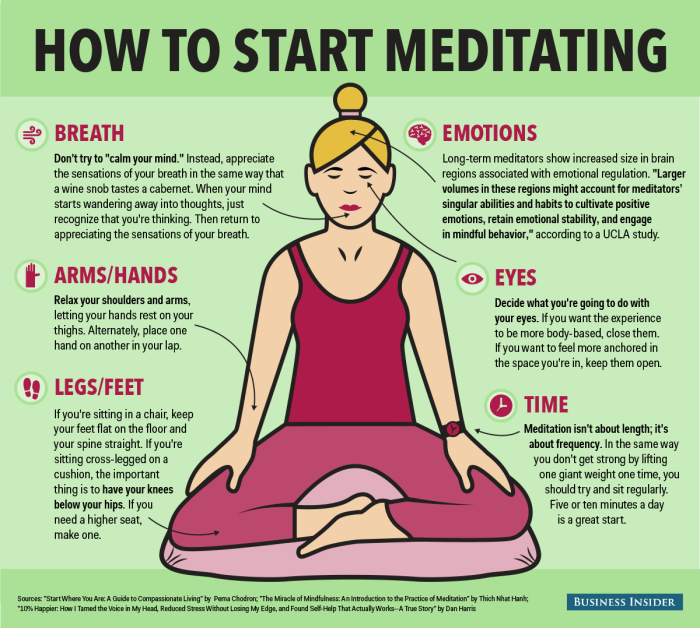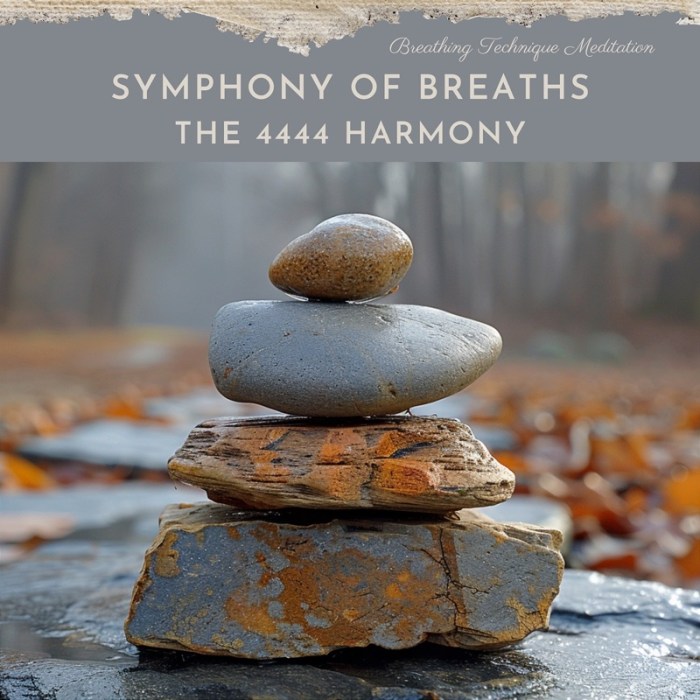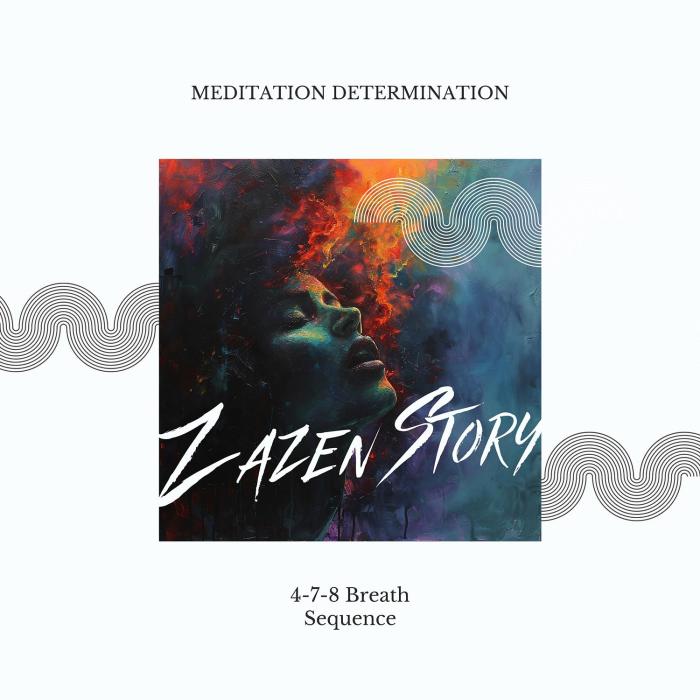With 3 Guided Breathing Meditations for Relaxation at the forefront, embark on a journey towards tranquility and calmness. Discover how these meditations can transform your daily life and bring a sense of serenity amidst the chaos.
Explore the different techniques, benefits, and tips that will help you create a soothing environment for your meditation practice. Let’s dive into the world of guided breathing and unlock a path to relaxation like never before.
Benefits of Guided Breathing Meditations: 3 Guided Breathing Meditations For Relaxation

Guided breathing meditations offer a variety of benefits that can significantly improve mental well-being and reduce stress and anxiety levels. These relaxation techniques provide a calming and soothing effect on the mind and body, promoting overall wellness.
Importance of Relaxation Techniques
- Guided breathing meditations help individuals cultivate mindfulness and achieve a state of deep relaxation.
- These techniques can reduce the production of stress hormones in the body, leading to a decrease in anxiety levels.
- Practicing guided breathing meditations regularly can enhance focus, concentration, and cognitive function.
Reduction of Stress and Anxiety
- By focusing on the breath and following guided instructions, individuals can experience a sense of calm and tranquility.
- Deep breathing techniques incorporated in guided meditations help slow down heart rate and induce relaxation responses in the body.
- Consistent practice of guided breathing meditations can create a sense of emotional balance and stability, reducing feelings of anxiety and tension.
Impact on Mental Well-being
- Guided breathing meditations have been linked to improved mood, increased self-awareness, and a greater sense of inner peace.
- These practices can help individuals better cope with everyday stressors and challenges, leading to a more positive outlook on life.
- Regular engagement in guided breathing meditations can contribute to enhanced emotional resilience and overall mental health.
Personal Experiences
- Many individuals have reported feeling calmer, more centered, and better equipped to handle stress after incorporating guided breathing meditations into their daily routine.
- Some people have shared that guided meditations have helped them manage symptoms of anxiety disorders and improve their overall quality of life.
- Personal stories often highlight the transformative power of guided breathing meditations in promoting relaxation and mental clarity.
Types of Guided Breathing Meditations

Breathing techniques are an essential part of guided meditation practices, helping individuals relax, reduce stress, and improve focus. Different types of breathing techniques are used in guided meditations to achieve these benefits. Let’s explore some popular methods and how they compare to each other.
Box Breathing
Box breathing, also known as square breathing, involves inhaling, holding the breath, exhaling, and holding the breath again for equal counts. This technique helps regulate breathing patterns and calm the mind. Here is a step-by-step guide for beginners:
- Inhale through your nose for a count of four.
- Hold your breath for a count of four.
- Exhale through your mouth for a count of four.
- Hold your breath for a count of four.
4-7-8 Technique
The 4-7-8 technique involves breathing in for a count of four, holding the breath for a count of seven, and exhaling for a count of eight. This technique can help with anxiety and promote relaxation. Here is a beginner’s guide:
- Inhale through your nose for a count of four.
- Hold your breath for a count of seven.
- Exhale through your mouth for a count of eight.
Diaphragmatic Breathing
Diaphragmatic breathing, also known as belly breathing, focuses on engaging the diaphragm for deep breaths. This technique can help reduce stress and increase oxygen flow in the body. Beginners can start with these steps:
- Lie down or sit comfortably with one hand on your chest and the other on your belly.
- Inhale deeply through your nose, feeling your belly rise as you breathe in.
- Exhale slowly through your mouth, feeling your belly fall as you breathe out.
These are just a few examples of guided breathing meditations. It’s essential to explore different techniques and find what works best for you. Remember that variations and adaptations can be made to suit individual preferences and needs.
Creating a Relaxing Environment for Meditation

Creating the right ambiance for meditation is crucial to enhance the overall experience and promote relaxation. Here are some tips on how to create a peaceful and comfortable space for guided breathing sessions:
Lighting
- Dimming the lights or using soft, warm lighting can help create a calming atmosphere for meditation.
- Candles or salt lamps can also add a soothing glow to the room.
Music
- Soft, instrumental music or nature sounds can help drown out distractions and create a serene environment.
- Choose music that is calming and without lyrics to avoid any distractions during the meditation session.
Aromatherapy
- Essential oils like lavender, chamomile, or eucalyptus can be diffused in the room to promote relaxation and calmness.
- The use of aromatherapy can help create a sensory experience that enhances the meditation session.
Props
- Pillows, cushions, or a comfortable meditation cushion can provide support and help maintain a comfortable posture during the session.
- A cozy blanket can also be used to keep warm and feel more relaxed during meditation.
Personal Rituals
- Establishing a pre-meditation ritual, such as lighting a candle, burning incense, or taking a few deep breaths, can help signal to your mind that it’s time to relax and focus.
- Creating a consistent routine before each meditation session can help prepare your mind and body for a deeper relaxation experience.
Incorporating Guided Breathing Meditations into Daily Routine

Integrating guided breathing exercises into your daily schedule can help you experience the benefits of relaxation and mindfulness consistently. Here are some tips on how to make guided breathing meditations a part of your daily routine:
Setting a Specific Time
Choose a specific time of day when you can dedicate a few minutes to practice guided breathing meditations. This could be in the morning to start your day on a calm note, during a break at work to relieve stress, or in the evening to unwind before bed.
Creating a Quiet Space
Find a quiet and comfortable place where you can focus on your breathing without distractions. This could be a corner of your room, a peaceful outdoor spot, or any space where you feel relaxed and at ease.
Duration and Frequency, 3 Guided Breathing Meditations for Relaxation
Start with shorter guided breathing sessions, such as 5-10 minutes, and gradually increase the duration as you become more comfortable with the practice. Aim to practice guided breathing meditations at least once a day to experience the full benefits.
Consistency and Motivation
Stay consistent with your meditation practice by setting reminders or alarms to help you remember to take a few minutes for yourself each day. Keep track of your progress and notice how guided breathing meditations positively impact your overall well-being, which can serve as motivation to continue with the practice.
Last Recap

Embrace the power of guided breathing meditations and make them a part of your daily routine to experience a profound sense of peace and well-being. Start your journey towards a more relaxed and mindful life today.